The day a Lancaster bomber crashed over my Black Country garden
“The engine was going ‘bang, bang’, and there was black smoke as it went out of sight. There was a short silence, then a terrible crash.”
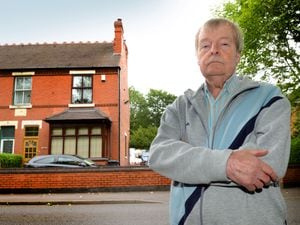
The memories are vivid. Bob Westworth points to a line of trees behind his childhood home, and describes the horror of the scenes he saw some 74 years ago.
"I was not quite eight years old, and I had been scraping butterfly eggs off the cabbages we were growing in the garden," he recalls.
"This plane came down, it was about the height of the top of the trees you see there. The engine was misfiring, it was going 'bang, bang', and there was black smoke as it went out of sight. The engine stopped, and there was a short silence, followed by a terrible crash."
On May 17, 1945, the youngster watched in horror as a Lancaster bomber crashed just yards from his home in Wednesfield, Wolverhampton, killing all seven of its crew. It is thought to be the only death of servicemen in Wolverhampton throughout the whole of the war, and even today Bob is haunted by the memories.
Face-to-face with death
A few years earlier, the boy had stood on the doorstep of the house in Neachells Lane with his grandfather watching the sky glow red as German bombs rained down over Coventry. But that was very different, it was a long way away. This time he found himself face-to-face with one of the airmen.
"I saw a man in sandy-brown overalls in the doorway, or a hole, behind the right wing," he says. "He looked as if he was contemplating jumping."
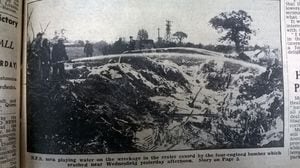
Bob does not know why the man and his fellow crewmen did not jump to safety. About 35ft above the ground, it was probably too high, but the plane was obviously losing height at a rapid speed. Maybe they felt the need to control the plane to prevent it causing devastation to the village, which at that time was still a quiet farming community.
"I went into the house and told my mum," says Bob, now 81 and living in Rugeley.
"She got her Hercules bike out of the shed with the child seat on the back, put me in it, and a few minutes later we were at the crash site in a field belonging to Dickie Lewis, a local farmer."
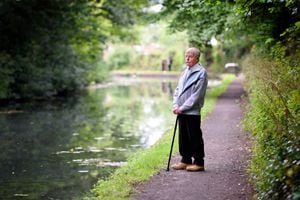
It appears the plane had become entangled in the overhead power cables. The plane is believed to have hit the ground in Lichfield Road, but debris was strewn for miles around.
"Two pylons were sagging between the cables, there was a jagged hole, bits of engine and wings and parts of the aircraft's structure spread across the field," says Bob.
"Above everything was the smell of human flesh burning, and my mother began to cry. She said she saw a man cut in half near the remains of a wing.
"It was all too much for her, she turned her bike around and pedalled home, crying all the way and saying 'poor men, poor men'.
"The memory has haunted me for years now, I always wondered who the men were."
Honoured
It was revealed last week that the seven airmen would be honoured by each having roads named after them on a new housing estate being built in the area.
Pilot Bernard Hall, flight engineer Ronald James O’Donnell, navigator Reginald Henry Smith, air bomber Victor Francis Dobell Meade, wireless operator Gordon Leonard Rabbetts and air gunners Vincent Reginald Woodburn and John Alfred Sills all died in the crash. Roads will be named after them at a new housing development planned for Lakefield Road, on land that previously belonged to Wednesfield High School, now Wednesfield High Academy.
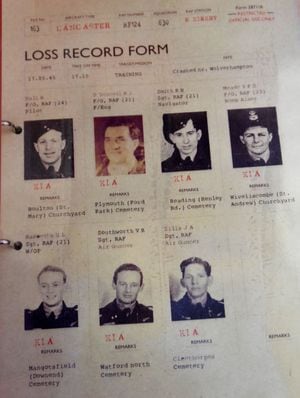
The crash created a 5ft crater in the ground, and the men were buried at the scene, with a local church minister performing a simple funeral ceremony. The men were later given memorials at cemeteries in their home towns.
They were serving with 630 Squadron operating out of East Kirkby, Lincolnshire, and the crash took place just nine days after Germany had surrendered and the war in Europe was officially over.
The plane was on a routine training flight when it crashed to the ground. But historians are stuck in a fierce debate over which way the plane came over Wednesfield as well as what exactly caused it to come down.
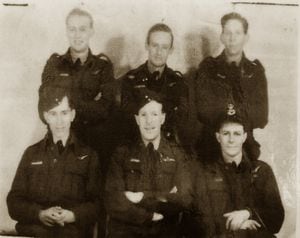
Ray Fellows, of Wednesfield History Society, who has been researching the crash since 1988 and has heard many different versions of the story, says: "It is such a shame that these lads died just after the war had finished and we need to remember them.
"So many people have come forward saying they saw it from the Navigation at Fibbersley, and others say they saw it over Wednesfield Park.
"I think the likely explanation is that came over Wednesfield Park first, did a part circle, and came back, hitting the power lines."
Scorched grass and wreckage
Ray says one of the reasons why the men did not jump to safety could have been down to the design of the plane, saying they were quite difficult to get out of.
"You would have to go through the bomb doors," he says.
The Express & Star reported that four bricklayers working some distance away were thrown to the ground and had to be treated for shock.
"Pieces of the bomber were strewn over an area two miles wide," the newspaper said.
"There was not a single piece of the plane left larger than a table top."
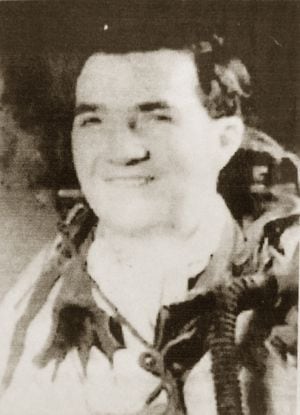
The Express & Star's reporter said when he arrived on the scene, shortly after the crash, firemen were on the wreckage and had it well under control.
A long stretch of hedge had been burned to the ground, and the grass of a field scorched over a large area.
"There were no signs of the engines, but the crash caused a crater 5ft deep in the road, and it is quite likely they were buried," said the report.
The chimney pot of Moat House Farm was thought to have been knocked off by the plane, but the other houses escaped damage. However, Ray believes this damage was more likely caused by the vibrations.
Two explosions
Express & Star van driver Joe Castree was one of the first on the scene.
He said he was handling a bundle of papers to a girl in Stubby Lane when he heard the plane flying very low.
"It passed right over me," he said at the time.
"There seemed to be two explosions in the air before the crash.
"I ran to the spot immediately, but it was impossible for me to do anything as there was just a lot of wreckage scattered over a wide area. and no signs of any fragments of the crew except fragmentary remains. Bullets were exploding and flares were going off."
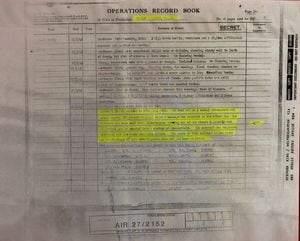
Another witness described bullets going off like a firework display, many of which appeared to be 'tracers' – bullets with a small pyrotechnic charge in the base for night vision.
"The plane seemed to come down in a swift vertical dive," he added.
An entry in the squadron's operation record book, dated May 15, 1945, says: "Aircraft number RF124 crashed on 17th May, 1945. It took off on a normal non-operational cross-country flight, and at 17.15 hours a message was received to the effect that the aircraft had been seen near Wolverhampton coming out of the clouds apparently out of control and it crashed into a roadway in Wednesfield.
"The aircraft was completely destroyed and the whole crew were killed. The cause of this accident is not known, and the findings of this investigation have not yet been received."
Ray says the investigation came up with a number of possible theories, including the possibility that there was a terrorist bomb in the plane. However, the conclusion was that the crash was probably caused by something as simple as engine failure.
Wednesfield History Society is holding a 1940s themed community day at Wednesfield High Academy on August 3, with all proceeds going towards a proposed memorial at the site. The event takes place from 10.30am until 4.30pm.





